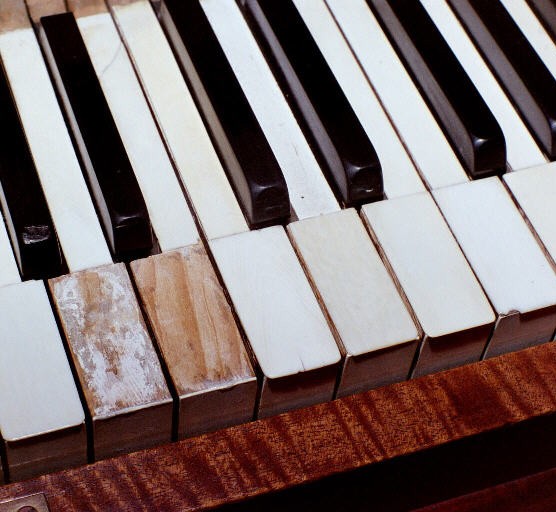

Being that the majority of the music is diegetic, the suspense builds naturally, never feeling manipulative. Simple and oddly suspenseful, the beautiful piano notes are far more effective than your standard, hackneyed suspense drones. His aural profession provides a perfect contrast to his supposed disability, his acutely developed ear functioning as counterbalance to what he “lacks.” In service to the plot, it also allows him access to the homes of several people, a silent witness to that which he should be unable to see.Īll of this drama is accompanied by-what else-a classical piano score. All of this is supplemented by our main character’s occupation as a piano tuner. In what could have easily provided enough engaging content for a feature narrative, the film relates an entire range of character development and emotions in thirteen short minutes, from depression, to humor, to sensuality, and ultimately, suspense. The Piano Tuner deceptively transforms from intriguing premise to smartly crafted thriller in an admirable, almost Hitchcockian, style. It’s also incredibly well executed, tightly scripted and perfectly paced.
BECOMING A PIANO TUNER MOVIE
This leads to the film’s gripping narrative hook, the kind of thing you’d see in bold letters on the bottom of a movie poster: if you’re supposed to be blind but can actually see, what if you see something that you shouldn’t?īut, Treiner’s film is more than just a great concept.

What starts somewhat innocently slowly develops into something more off kilter, a voyeuristic existence where those being watched can readily see their watcher, unaware of his true facilities. A young man-in this case a disgraced musical prodigy come piano tuner-pretends to be blind. Such is the case with Olivier Treiner’s ingenious short thriller, The Piano Tuner (L’accordeur). This article originally appeared in Listen: Life with Music & Culture, Steinway & Sons’ award-winning magazine.Some premises are just brilliant-with just a simple pitch you’re hooked. It is my pleasure to watch this fine gentleman relax and enjoy a job well done, and when he finishes, I feel the sadness of knowing he has no successor.įay Vincent served as the eighth commissioner of Major League Baseball from 1989–1992. He seems to agree, and I am certain he enjoys playing notes he has just ensured are pure and precise. He says he plays poorly, but to my ear the growling bass notes and clear ringing treble seem freshly minted. When he finishes, Ingo washes himself in the sound of the instrument, gently playing several short pieces. And while Ingo is proud of the current Steinways, he laments there are no longer any of his generation of craftsmen, whose work has been baked into the very piano he is tuning.


Steinway, who brought Ingo to this country to ensure the quality of the pianos being constructed in his eponymous New York factory. Watching him work, I can appreciate the ancient art in which he has been trained. I feel the shame of not having continued my lessons as my mother wished. He tells me the action on my piano has become stiff from underuse and urges me to find ways to have the piano played more often. A master of the piano, he works alone, with no apprentice to watch him gently tugging on the tuning wrench to loosen or tighten the strings. He has often been asked to set up programs to train tuners, he says, but nothing has come of it. Of course, they have to have a basic ear for the sounds, but one does not have to be musical or skilled.” I ask if he has trained successors, and he confesses he has not. As I sit across the living room while he works, I ask Ingo whether he could teach anyone - even me - to tune a piano. He speaks fondly of each of them, though none was able to tune a piano. Ingo has tuned pianos for such luminaries as Arthur Rubinstein, Marian McPartland, George Shearing and Leonard Bernstein. He knows where this piano spent much of its life - “an elderly woman on Park Avenue owned it and I took care of it” - and was pleased when he found a welcoming new home for it. To him, my piano is an old friend, his visits to it like returns to his childhood neighborhood. Perhaps the sheep are different.” I purchased the piano from Ingo several years ago, so he knows it well. “This is Scottish felt, and for some reason it is no longer available. “The felt in this piano cannot be duplicated today, and it makes a difference in the sound,” Ingo explains. Ingo tells me that the felt in my 1936 Steinway is the original. His father, who once tuned for Sergei Rachmaninoff in Vienna, trained Ingo rigorously, demanding that his son master the construction of the piano before learning to tune one.


 0 kommentar(er)
0 kommentar(er)
